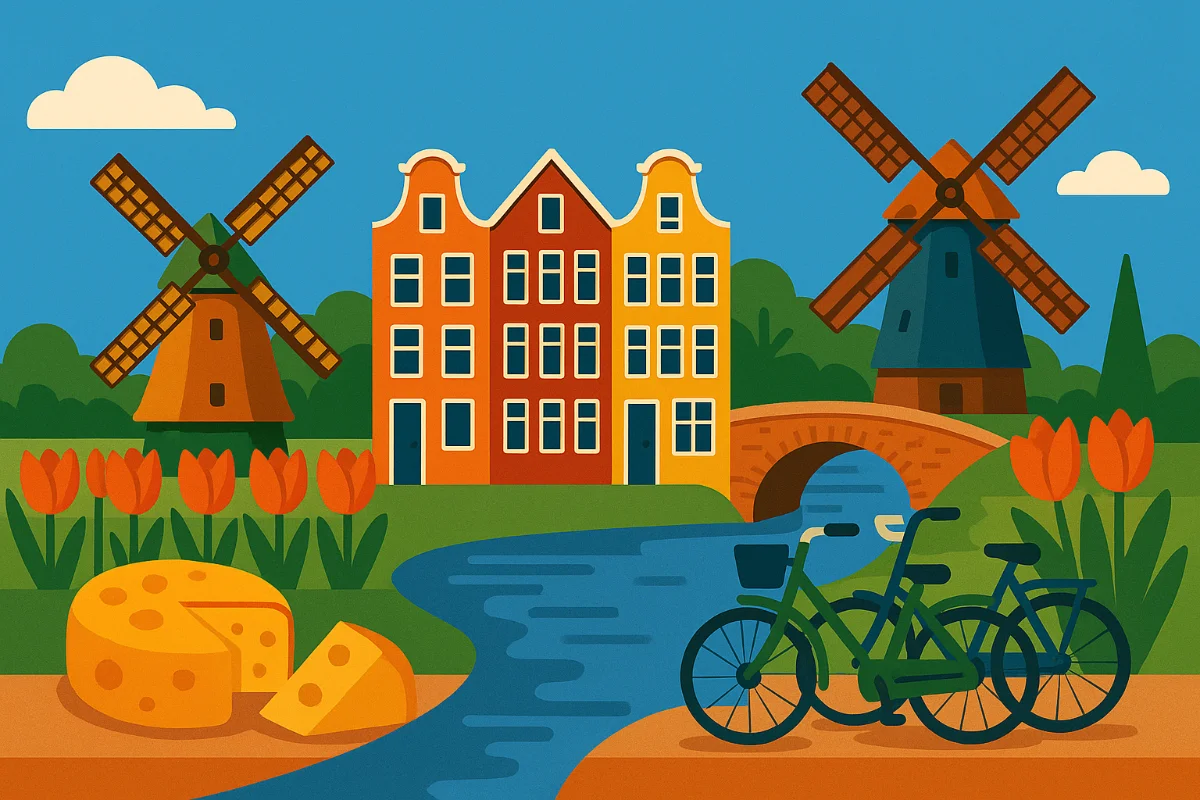Imperfect Tense vs. Perfect Tense (A2)
Both the Imperfect Tense (Onvoltooid Verleden Tijd - O.V.T.) and the Perfect Tense (Voltooid Tegenwoordige Tijd - V.T.T.) talk about the past, but they are used differently, especially in spoken Dutch.
1. Perfect Tense (V.T.T.) - Recap
- Formation:
Subject + hebben/zijn (conjugated) + ... + Past Participle - Main Use: To talk about completed actions in the past, often with a connection to the present or when the result is important.
- Focus: The fact that the action is finished and its relevance now.
- Frequency: Very common in spoken Dutch for completed actions.
- Examples:
Ik heb mijn sleutels gevonden.(I have found my keys - Result: I have them now)Zij is gisteren aangekomen.(She arrived yesterday - Result: She is here now)We hebben lekker gegeten.(We have eaten well - Result: We are full/satisfied now)
2. Imperfect Tense (O.V.T.) - Recap
- Formation:
Subject + Verb Stem + -de(n)/-te(n)(regular) orSubject + Irregular past form - Main Uses:
- Describing situations, states, or people in the past.
- Talking about habits or repeated actions in the past.
- Telling stories or describing a sequence of events in the past.
- Stating a past fact without emphasizing the result in the present.
- Focus: The action, situation, or habit as it was happening in the past.
- Frequency: Common in written Dutch, storytelling, and formal language. Less common than V.T.T. in conversation for single, completed actions, but essential for descriptions and past habits.
- Examples:
Het regende de hele dag.(It was raining all day - Description of past situation)Vroeger woonde hij in een klein huis.(He used to live in a small house - Past state/habit)Elke zondag bezochten we onze oma.(Every Sunday we visited our grandma - Past habit)De man liep de kamer binnen en keek rond.(The man walked into the room and looked around - Sequence in a story)Ik werkte gisteren.(I worked yesterday - Simple past fact)
3. When to Use Which? (A2 Guidelines)
- *Talking about something you did (a completed action, especially recent): Use the Perfect Tense (V.T.T.)* in conversation.
- "What did you do today?" ->
Ik heb gewerkt.(I worked / I have worked.) - "Did you eat?" ->
Ja, ik heb gegeten.(Yes, I ate / I have eaten.)
- *Describing how things were in the past (situations, weather, feelings): Use the Imperfect Tense (O.V.T.)*.
Het was mooi weer gisteren.(The weather was nice yesterday.)De stad was rustig.(The city was quiet.)Ik had hoofdpijn.(I had a headache.)
- *Talking about things you used to do (past habits): Use the Imperfect Tense (O.V.T.)*.
Toen ik klein was, speelde ik veel buiten.(When I was little, I played outside a lot.)Hij rookte vroeger, maar nu niet meer.(He used to smoke, but not anymore.)
- Using
zijn(to be) andhebben(to have) in the past: You will frequently use their Imperfect Tense (O.V.T.) forms:was/warenandhad/hadden. Ik was moe.(I was tired.)Wij hadden een probleem.(We had a problem.)
Summary Table:
| Feature | Perfect Tense (V.T.T.) | Imperfect Tense (O.V.T.) |
|---|---|---|
| Structure | hebben/zijn + participle |
-de(n)/-te(n) or irregular form |
| Main Focus | Result/Completion in present | Action/Situation/Habit in the past |
| Common Use | Completed actions (spoken) | Descriptions, habits, stories (written) |
| Conversation | Very Frequent (for actions) | Frequent (for was/had, descriptions) |
A2 Advice: In conversation, get comfortable using the Perfect Tense (V.T.T.) for completed actions. Use the Imperfect Tense (O.V.T.) mainly for was/waren, had/hadden, and describing past situations or habits. You will see O.V.T. much more when reading.

